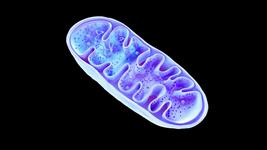Transient Prime Editor Expression Treats Phenylketonuria in Mice
A team of researchers in Switzerland, Canada and the United States recently shared the results of a study that led to successful treatment of phenylketonuria in mice using a transient prime editor.
In contrast to several other proof-of-concept studies demonstrating in vivo prime editing, where the prime editor is typically delivered on a viral vector, the team, led by Gerald Schwank at the University of Zurich, chose to deliver the pegRNA using self-complementary adeno-associated viral (scAAV) vectors and the prime editor (PE) using nucleoside-modified mRNA encapsulated in lipid nanoparticles (LNPs). This approach resulted in transient expression of the PE for 48h, which is arguably more attractive than viral-based PE delivery methods that lead to prolonged PE expression after the desired edit has been made.
When applied to a mouse model of phenylketonuria (PKU), the team observed 4.3% gene correction at the intended locus, and specifically in the liver, using an AAV dose of 2.5×1013 vg/kg and three doses of 2 mg/kg mRNA-LNP. Encouragingly, the level of editing achieved was sufficient to reduce blood L-phenylalanine (Phe) levels from over 1500 µmol/l to below the therapeutic threshold of 600 µmol/l.
Read the manuscript on the preprint server bioRxiv here.
What is prime editing?
Prime editing combines the powerful DNA-scanning and sequence-identification capabilities of the CRISPR-Cas9 system with a reverse transcriptase enzyme, which uses an RNA template to synthesise a new single-strand DNA sequence and insert it into the DNA. Prime editing is considered to have a very desirable safety profile when compared to conventional CRISPR-Cas9-mediated gene editing approaches, because it allows for targeted DNA editing without the intentional generation of DNA double-strand breaks.
Read much more about prime editing in our recent article: 'Explainer: What Is Prime Editing and What Is It Used For?'
Tags
ArticleNewsCMN Briefsin vivoLipid-based nanoparticleAdeno-associated virus (AAV)Phenylketonuria (PKU)Prime editors
CLINICAL TRIALS
Sponsors:
Suzhou Maximum Bio-tech Co., Ltd.
Sponsors:
Zhejiang University







